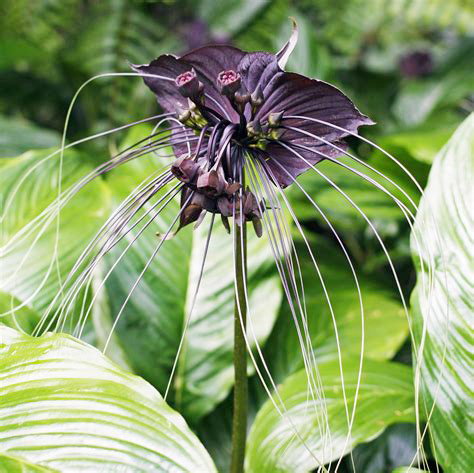by Ana Morlier
Weird and Wonderful Plants
Happy Halloween month, readers! Are you mentally prepared for the trials and tribulations of Halloween? From accumulating costumes to satisfying the pop-culture preferences of the whole family to making Pinterest-ready treats, one’s patience and mental capacity are stretched rather thin. Decorations are an entirely separate matter, as everyone is decking out their lawns and houses with all manner of monsters and inflatables. Have no fear, as this month’s column will give you a unique set of decorations that will be sure to surpass your neighbor’s eerie interior design. These plants enhance the sensory fears of Halloween. With unusual silhouettes, deep, drab color palettes (black prince snapdragons), putrid smells (Voodoo Lily), and unusual textures (Frankenstein cactus), you’ll be sure to scare guests with an all-new, organic level of terror, aside from the usual petrification that spawns from examining the receipt at the Halloween store. Here are my favorite spooky plants!

Bat flower plant (pictured right) is native to Australia and Asia, so growing it in a separate container is advised to prevent overpopulation and invasion. The plant earns its name from the long, black petals of the blooming flower that looks like bat wings or ears, as the seed pods give the illusion of eyes and a jaw. It is also known as “tiger beard” due to the long bracteoles that protrude from the center of the flower. It is, indeed, a spooky plant and may even shock guests with its unusual silhouette. Surprisingly enough, this is a perennial, so it will haunt your enclave year after year! Grow in partial sun, in well-draining soil, and keep the soil moist throughout the day. You can expect blooms in late summer and fall. Keep in warmer parts of your house, as it thrives in temperatures 70-80 degrees Fahrenheit. You can also use fertilizer for orchids to enhance plant growth.
Voodoo lily (A. henryi), also known as the devil’s tongue lily, bears a creepy color palette (ranging from a deep crimson to a dark mauve) and profile. Be warned: it does emanate the unsettling smell of a rotting carcass to allure a different sort of pollinator. As bees and butterflies merely pollinate more colorful flowers, the voodoo lily adapts so that insects usually attracted to the smell of decomposing animals pollinate it. Its dark, lengthy spadix- or central stalk common in Lillies, both emanates the smell and warrants its name, as it looks like quite the wicked tongue. Grow in well-draining, sandy soil in partial to full shade. Grow in temperatures 60 degrees or higher. Like the bat flower, let the soil dry out between waterings, as too much watering can lead to root rot. Requires mild-to-high humidity which can be accomplished with a humidifier or by misting the leaves.
Black prince snapdragons aren’t exactly creepy plants, but the deep, blood-red blooms certainly add to any mysterious color scheme! Grow in well-draining soil. Let the soil dry out until your next watering (moisten but not soak soil), avoiding watering blooms. Grow in full sun to partial shade. Expect blooms in the fall.
Cotton ball cacti (also known as old man cactus) have the appearance of a fluffy ghost and can be made quite friendly with the addition of googly eyes. Grow in well-drained soil and water every 2-3 days. Requires more water in the summer.
The Frankenstein cactus bears both a creepy name and an unusual shape. Out of its thick green stem protrudes a fan-like alabaster crest, lined with pink and crimson borders. It is certainly “out of this world.” Grow in full sun to partial shade, in an area with medium to high humidity and airflow, watering only when soil is dry.
Hopefully, these plants will make a small dent in your list of decorating to-dos. Whether you go for an all-out spooky theme of voodoo lilies and bat flowers or a friendlier, pleasant theme of cotton ball cacti and black prince snapdragons, you’ll be sure to make a statement, perhaps as a mini shop of horrors, minus Audrey II’s “feed me Seymour” vocalizations (unless you’ve majorly neglected your plants!). May your Halloween be entertaining and enjoyable.
Credit to: Cayla Leonard from Happy Sprout, Amanda Welch of We are Huntsville, Cynthia Haynes from Iowa State University, World of Succulents, Epic Gardening, and Peg Aloi, Marie Iannotti, and Jamie McIntosh from The Spruce.

